
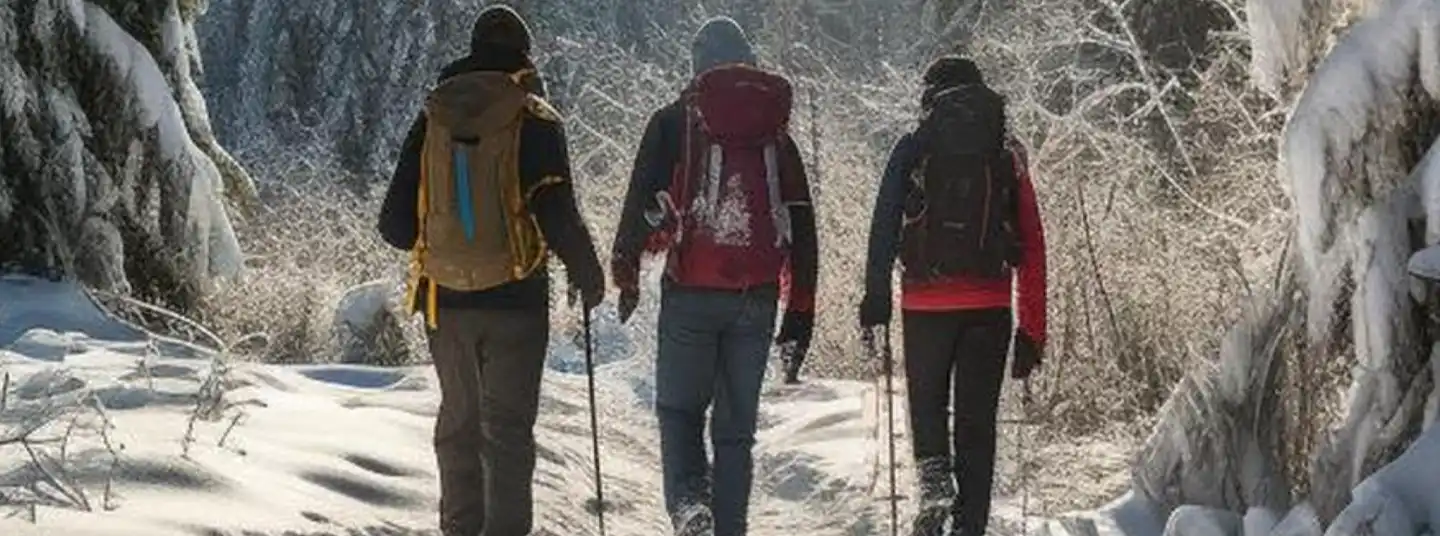
When it comes to bracing the chill, having the best-insulated layers for cold weather is essential. Winter clothing that offers thermal insulation and utilizes effective layering systems can keep us comfortable and warm in even the harshest conditions. Whether you’re embarking on winter adventures or simply need cold weather gear for everyday activities, choosing the right insulated layers is crucial to staying cozy and protected.
Key Takeaways:
- Selecting the appropriate base layer is crucial for moisture management and comfort. Merino wool, like the quality base layers from the Icebreaker brand, is highly recommended for its lightweight, breathable, and odor-resistant properties.
- For optimal heat retention, consider midlayers made of fleece or down. Fleece is a budget-friendly option, while down provides exceptional warmth in dry conditions. The Patagonia Micro Puff is an excellent ultralight and packable midlayer choice.
- The outer layer, or shell, should be waterproof and breathable to protect against the elements. GoreTex is a popular material known for its durability and weather-resistance. The Triple F.A.T. Goose down jacket is recommended for its affordability and warmth.
- Proper layering techniques involve anticipating body temperature fluctuations and adjusting layers accordingly. This helps to ensure optimal warmth while avoiding overheating or excessive sweating. Don’t forget to cover extremities such as your head, hands, and feet, as they are more susceptible to feeling the cold.
- Some highly recommended insulated layers for cold weather protection include the Arc’teryx Atom Jacket, Columbia Steens Mountain 2.0, Patagonia Micro Puff, Patagonia R1 Air Full-Zip Hoody, and Arc’teryx Cerium Jacket.
The Importance of Layering Systems

Layering systems offer a practical and effective solution for keeping warm in cold weather. By combining different types of insulated layers, you can create a versatile and customizable outfit that adapts to changing temperatures and activity levels. This ensures that you stay comfortable and protected from the elements, whether you’re tackling outdoor adventures or simply running errands in chilly weather.
The Base Layer
The base layer is the foundation of your layering system. It is designed to regulate body temperature by wicking away moisture and keeping you dry. When choosing a base layer, consider materials like merino wool, which is known for its excellent thermal insulation and moisture-wicking properties. The Icebreaker brand offers high-quality base layers that are lightweight, breathable, and odor-resistant. These qualities make merino wool base layers ideal for cold weather activities.
The Midlayer
The midlayer provides insulation and helps retain heat. Fleece and down are popular choices for midlayers due to their exceptional warmth-to-weight ratio. Fleece is more affordable and offers good insulation even when wet. On the other hand, down provides superior warmth in dry conditions and is highly compressible, making it perfect for layering. The Patagonia Micro Puff is a recommended midlayer option that combines the best of both worlds – it is ultralight, packable, and provides excellent insulation.
The Outer Layer
The outer layer, also known as the shell, is responsible for protecting you from wind, rain, and snow. Waterproof and breathable materials, such as GoreTex, are essential for an effective outer layer. GoreTex is known for its durability and weather-resistance, ensuring that you stay dry and comfortable in inclement weather conditions. When looking for an outer layer, consider the Triple F.A.T. Goose down jacket. It offers both warmth and affordability, making it a reliable choice for cold weather protection.
Remember, proper layering is key to staying warm in cold weather. Anticipate your body temperature and adjust your layers accordingly. Don’t forget to cover your head, hands, and feet, as they are particularly sensitive to the cold. With the right combination of base layers, midlayers, and outer layers, you can enjoy the winter season while staying warm, comfortable, and stylish.
Choosing the Right Base Layer
The base layer plays a vital role in keeping you dry and comfortable, and merino wool is an excellent choice for its lightweight, breathable, and odor-resistant properties. When it comes to base layers, the Icebreaker brand is highly recommended for its quality and performance.
Merino wool is a natural fiber that offers numerous benefits for cold weather protection. It has exceptional thermal insulation, which helps regulate body temperature. This means it keeps you warm in cold weather and cool when it’s warm outside. Additionally, merino wool is highly breathable, allowing moisture to escape and preventing sweat buildup. This makes it ideal for active outdoor activities.
One of the standout features of merino wool is its ability to resist odor-causing bacteria. This means you can wear your base layer multiple times without worrying about unpleasant smells. Merino wool is also incredibly soft and comfortable against the skin, making it a great choice for those with sensitive skin.
Icebreaker: The Trusted Brand
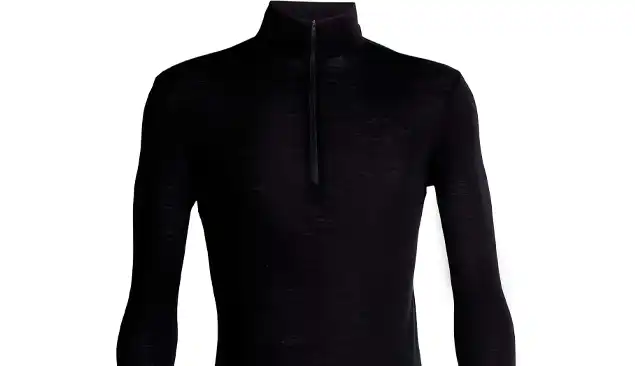
| Brand | Key Features |
|---|---|
| Icebreaker | – 100% merino wool |
| – Lightweight and breathable | |
| – Odor-resistant | |
| – Soft and comfortable |
Icebreaker is a renowned brand that specializes in merino wool apparel. Their base layers are crafted with 100% merino wool, ensuring top-notch quality and performance. Icebreaker base layers are lightweight, allowing for ease of movement, and offer excellent breathability to keep you dry and comfortable throughout your cold weather adventures.
Furthermore, Icebreaker base layers are odor-resistant, thanks to the natural properties of merino wool. You can wear them for extended periods without worrying about unpleasant odors. The soft and comfortable feel of Icebreaker base layers against your skin will add an extra level of enjoyment to your outdoor activities.
When it comes to choosing the right base layer, merino wool is the way to go. And when it comes to merino wool base layers, Icebreaker is the brand that you can trust for quality, performance, and comfort.
| Brand | Key Features |
|---|---|
| Icebreaker | – 100% merino wool |
| – Lightweight and breathable | |
| – Odor-resistant | |
| – Soft and comfortable |
With Icebreaker base layers, you can stay dry, comfortable, and odor-free while enjoying the great outdoors in cold weather. Choose merino wool and experience the difference for yourself.
Optimal Midlayer Materials
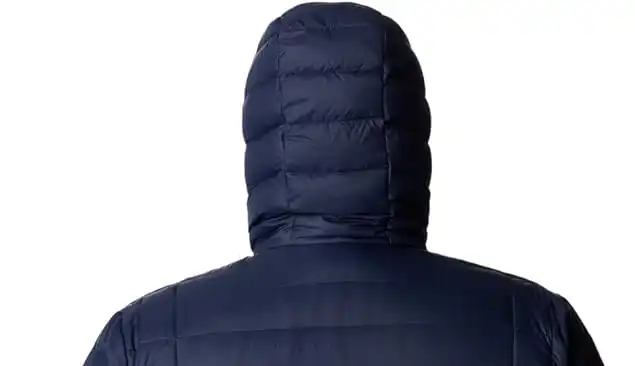
When it comes to midlayers, choosing between fleece and down can depend on budget and specific warmth requirements. Fleece is a popular choice for its affordability and versatility. It provides excellent insulation and is known for its ability to retain heat even in damp conditions. Fleece midlayers are lightweight, breathable, and quick-drying, making them ideal for active outdoor activities.
On the other hand, down midlayers offer superior warmth and are highly compressible, making them easy to pack and carry. Down insulation is derived from the soft feathers of geese or ducks and provides exceptional warmth-to-weight ratio. It traps heat effectively and is known for its cozy, luxurious feel. However, down can lose its insulating properties when wet, so it’s important to keep it dry in wet weather conditions.
A highly recommended midlayer option is the Patagonia Micro Puff. This ultralight and packable midlayer combines the best qualities of fleece and down. It features synthetic insulation that mimics the warmth and compressibility of down, while also providing insulation when wet. The Patagonia Micro Puff offers superior warmth, breathability, and versatility, making it an excellent choice for cold weather adventures.
| Material | Pros | Cons |
|---|---|---|
| Fleece | Affordable, versatile, retains heat in damp conditions | Less warm than down, bulkier |
| Down | Superior warmth, highly compressible | Loss of insulation when wet, more expensive |
| Patagonia Micro Puff | Ultralight, packable, warmth even when wet | Higher cost |
When choosing a midlayer, it’s important to consider your budget, specific warmth requirements, and the conditions you’ll be facing. Whether you opt for fleece, down, or a hybrid like the Patagonia Micro Puff, a high-quality midlayer will provide essential insulation and keep you warm and comfortable in cold weather.
The Essential Outer Layer
Your outer layer, or shell, should be a reliable barrier against the elements, and GoreTex offers excellent durability and weather-resistance. Known for its superior performance, GoreTex is a waterproof and breathable fabric that ensures you stay dry and comfortable in wet conditions without compromising on breathability. This high-quality material is designed to withstand the harshest weather conditions, making it an ideal choice for cold weather protection.
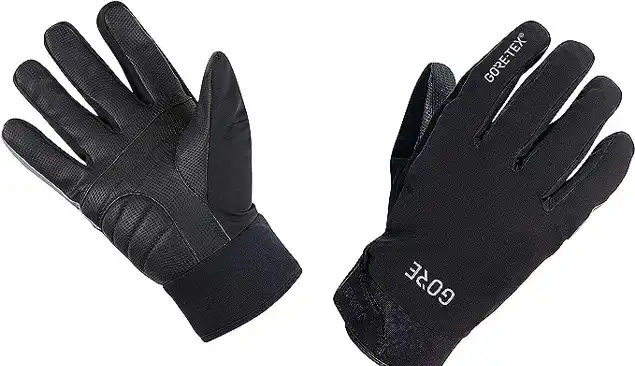
When selecting an outer layer, it’s important to consider features such as waterproof ratings, breathability, and insulation. A good shell should protect you from rain, snow, and wind while allowing moisture to escape, preventing sweat build-up and keeping you dry from both outside and inside sources. GoreTex excels in these areas, providing reliable protection against the elements while allowing moisture to evaporate, keeping you dry and comfortable throughout the day.
In addition to its functional benefits, GoreTex is also highly durable, making it a long-lasting investment. Its superior construction and technology ensure that the fabric remains intact and continues to provide excellent weather resistance even after prolonged use. This durability is especially important when facing harsh weather conditions, as it ensures your outer layer remains intact and performs at its best.
| Features of GoreTex | Benefits |
|---|---|
| Waterproof | Keeps you dry in wet conditions |
| Breathable | Allows moisture to escape, preventing sweat build-up |
| Durable | Withstands harsh weather conditions and prolonged use |
When considering options for your outer layer, the Triple F.A.T. Goose down jacket is a highly recommended choice. This jacket combines the reliability of a shell with the warmth of down insulation, providing ultimate protection from the cold. With its durable construction and insulation properties, the Triple F.A.T. Goose down jacket ensures you stay warm and comfortable even in extreme weather conditions.
In summary, choosing the right outer layer is essential for cold weather protection. GoreTex offers excellent durability and weather-resistance, making it an ideal choice for your shell. Combined with the Triple F.A.T. Goose down jacket, you’ll have a reliable and effective combination to keep you warm and protected in even the harshest of conditions.
Proper Layering Techniques
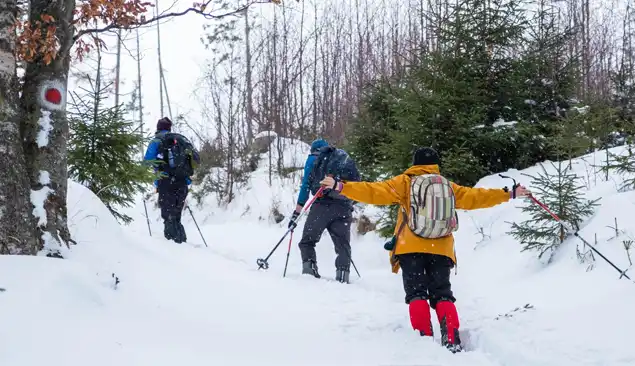
Proper layering techniques are essential for staying warm and comfortable in cold weather, and by understanding your body temperature, you can effectively manage your layers. Layering is all about finding the right balance between insulation and breathability to regulate your body heat. Here are some tips to help you master the art of layering:
- Start with a moisture-wicking base layer: A good base layer, such as one made of merino wool, helps manage sweat by pulling moisture away from your skin. This keeps you dry and prevents that uncomfortable clammy feeling.
- Add a midlayer for insulation: The midlayer is responsible for trapping heat and keeping you warm. Fleece or down jackets are excellent options for this layer. Fleece is affordable and provides good insulation, while down offers superior warmth in dry conditions. Consider the ultralight and packable Patagonia Micro Puff for added insulation without the bulk.
- Choose a waterproof and breathable outer layer: The outer layer, also known as the shell, acts as a barrier against wind and moisture. Look for jackets made with GoreTex technology, known for its durability and weather-resistance. For an affordable yet warm option, the Triple F.A.T. Goose down jacket is highly recommended.
- Anticipate your body temperature and adjust accordingly: Pay attention to how your body reacts to different temperatures and activities. If you’re starting to feel too warm, remove a layer to prevent overheating and excessive sweating. Likewise, if you’re feeling cold, add an extra layer for more insulation.
- Don’t forget your extremities: Your head, hands, and feet are particularly vulnerable to cold temperatures. Invest in a good beanie or hat, thermal gloves or mittens, and warm socks to keep these areas well-protected. Layering with items like a balaclava or neck gaiter can also provide extra warmth for your face and neck.
By following these proper layering techniques, you can ensure that you stay warm, comfortable, and protected from the cold. Remember, everyone’s ideal layering system may vary, so it’s important to experiment and find what works best for you. With the right combination of base layers, midlayers, and outer layers, you’ll be ready to take on any winter adventure.
A Complete Table of Recommended Insulated Layers
| Insulated Layer | Brand/Model |
|---|---|
| Base Layer | Icebreaker (Merino Wool) |
| Midlayer |
|
| Outer Layer |
|
Recommended Insulated Layers
In the vast range of available insulated layers, certain options stand out for their exceptional performance and quality. When it comes to base layers, the Icebreaker brand offers top-of-the-line options made from merino wool. These base layers are lightweight, breathable, and odor-resistant, making them ideal for cold weather protection.
For the midlayer, both fleece and down materials are highly recommended. Fleece is a more affordable choice that provides excellent warmth, while down offers unparalleled insulation in dry conditions. If you’re looking for a versatile midlayer that is ultralight and packable, the Patagonia Micro Puff is a top pick.
The outer layer, or shell, is crucial for protecting against the elements. GoreTex is a popular and trusted choice for its waterproof and breathable properties. When it comes to down jackets, the Triple F.A.T. Goose offers both warmth and affordability, making it a standout option for cold weather protection.
Recommended Insulated Layers:
| Insulated Layer | Brand |
|---|---|
| Arc’teryx Atom Jacket | Arc’teryx |
| Columbia Steens Mountain 2.0 | Columbia |
| Patagonia Micro Puff | Patagonia |
| Patagonia R1 Air Full-Zip Hoody | Patagonia |
| Arc’teryx Cerium Jacket | Arc’teryx |
These recommended insulated layers provide the perfect combination of warmth, comfort, and durability for cold weather protection. Whether you’re venturing into the great outdoors or simply braving the winter chill, investing in high-quality insulated layers is essential to staying warm and cozy.
Winter Fashion with Insulated Layers

Who says you can’t be fashionable while braving the cold? With the right insulated layers, you can stay warm and showcase your personal style. Cold weather fashion doesn’t have to be dull and bulky; there are plenty of options to keep you cozy and trendy throughout the winter season.
Layering With Style
Layering is not only functional but also an opportunity to create stylish outfits. Start with a base layer, such as a form-fitting merino wool top, to keep you dry and comfortable. Add a pop of color and texture with a cozy midlayer like a fleece or down jacket. Opt for bold patterns or classic neutrals that can be paired with different outer layers for versatility.
- Play with different textures and materials, such as combining a chunky knit sweater with a quilted vest.
- Accessorize with stylish beanies, scarves, and gloves to add an extra touch of flair to your winter ensemble.
Functional and Fashionable Outerwear
When it comes to outer layers, choose pieces that are both functional and fashionable. A waterproof and breathable shell is essential to protect you from the elements while maintaining comfort. Look for jackets with sleek designs and modern cuts that flatter your silhouette. Don’t forget to choose practical features like adjustable hoods, multiple pockets, and zippered vents.
| Brands | Recommended Styles |
|---|---|
| Arc’teryx | Atom Jacket |
| Columbia | Steens Mountain 2.0 |
| Patagonia | R1 Air Full-Zip Hoody |
Completing the Look
To complete your winter fashion statement, don’t forget about your footwear. Invest in a pair of stylish and warm boots that will keep your feet dry and cozy. Opt for functional designs with faux fur trims or sleek leather finishes that can be paired with both casual and dressier outfits.
Remember, winter fashion is all about blending style and functionality. With the right combination of insulated layers, you can brave the cold while looking effortlessly chic. Stay warm, stay fashionable, and enjoy everything the winter season has to offer!
Layering for Extreme Cold Weather
When facing extreme cold weather, layering becomes even more critical, and considering additional insulation can make all the difference in staying warm. In order to combat freezing temperatures, it’s important to build upon the base layer and midlayer with extra layers that provide enhanced warmth and protection.
To add additional insulation, one option is to incorporate a heavyweight base layer made from materials like fleece or wool. These materials retain heat and provide an extra layer of insulation against the cold. Another option is to include an insulated vest or jacket as a midlayer. These garments are designed to trap heat and keep your core warm, even in the coldest conditions.
| Base Layer | Midlayer | Additional Insulation |
|---|---|---|
| Heavyweight fleece or wool | Insulated vest or jacket | Down-filled parka or heavy-duty insulated jacket |
| Merino wool or synthetic thermal top | Wool or down sweater | Thermal pants or leggings |
| Thermal pants or leggings | Thermal pants or leggings | Double-layered socks or thermal boots |
In addition to layering, it’s important to pay attention to the extremities, as these areas are most susceptible to the cold. Wearing a hat, gloves, and insulated boots or shoes can help to keep your head, hands, and feet warm. Consider using hand and foot warmers for added warmth during extended periods of exposure to extreme cold.
By utilizing layering systems and considering additional insulation, you can effectively protect yourself from the harsh elements of extreme cold weather. Remember to always be prepared and choose high-quality, insulated layers that are specifically designed for extreme cold conditions.
Maintenance and Care Tips
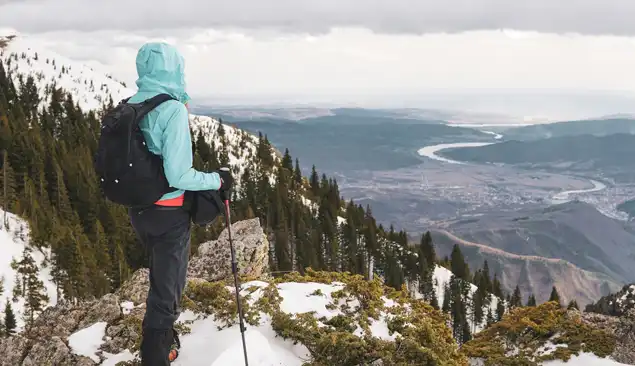
To ensure the longevity and effectiveness of your insulated layers, proper maintenance and care are essential. By following these simple guidelines, you can keep your winter clothing in top condition for years to come.
- Washing: When it’s time to clean your insulated layers, always refer to the manufacturer’s instructions. Most base layers and midlayers can be machine washed on a gentle cycle using a mild detergent. Avoid using fabric softeners or bleach, as they can degrade the insulation. For down jackets, it’s best to use a specialized down wash to maintain the loftiness of the feathers.
- Storage: Store your insulated layers in a cool, dry place away from direct sunlight. Avoid compressing down jackets for extended periods, as this can lead to loss of insulation. Instead, hang them or store them loosely in a breathable garment bag or storage container.
- Repairs: Inspect your insulated layers regularly for any rips, tears, or loose stitching. Small repairs can be done at home using a needle and thread, while larger repairs may require professional help. Addressing damages promptly will prevent them from worsening and ensure that your layers remain effective against the cold.
- Odor Control: Over time, your base layers may develop odors due to sweat and bacteria. To combat this, consider using specialized odor-control detergents or, better yet, air them out after each use. Merino wool’s natural properties also help to minimize odors, making it a great choice for base layers.
| Insulated Layer | Cleaning Method | Special Considerations |
|---|---|---|
| Base Layers | Machine wash on gentle cycle with mild detergent | Avoid fabric softeners or bleach |
| Midlayers (Fleece) | Machine wash on gentle cycle with mild detergent | Dry at low heat or air dry |
| Midlayers (Down) | Use specialized down wash or hand wash with mild detergent | Tumble dry with dryer balls or low heat |
| Outer Layers | Follow manufacturer’s instructions | Ensure proper drying to maintain waterproofing |
By incorporating these maintenance and care tips into your routine, you can extend the lifespan of your insulated layers and keep them performing at their best. Remember that proper maintenance not only ensures the effectiveness of your gear but also contributes to a more sustainable approach to outdoor clothing.
Conclusion
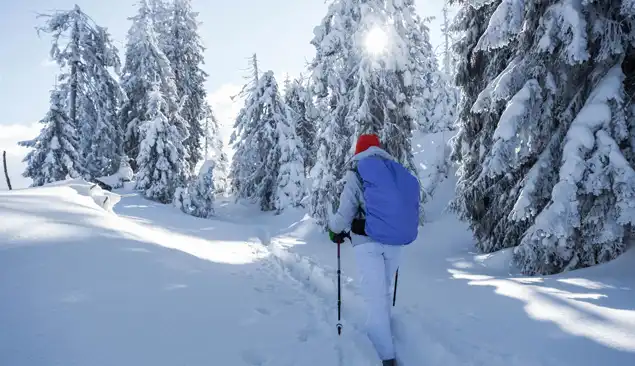
Choosing the right insulated layers for cold weather is vital in experiencing unparalleled comfort and warmth throughout winter. When it comes to staying warm in chilly temperatures, layering systems play a crucial role. They help trap heat, wick away moisture, and provide insulation in varying weather conditions.
For the base layer, merino wool is the top choice due to its lightweight and breathable nature. It also has excellent moisture-wicking properties, keeping you dry and comfortable. The Icebreaker brand offers high-quality base layers that are worth considering.
When it comes to the midlayer, you have the option of fleece or down. Fleece is a more budget-friendly choice, while down provides exceptional warmth in dry conditions. The Patagonia Micro Puff is an excellent choice for its ultralight and packable design, perfect for layering.
The outer layer, also known as the shell, should be both waterproof and breathable. GoreTex is a popular material known for its durability and ability to withstand harsh weather conditions. For those looking for warmth and affordability, the Triple F.A.T. Goose down jacket comes highly recommended.
Proper layering techniques are essential for staying warm while avoiding overheating and excessive sweating. You should anticipate your body temperature and adjust layers accordingly. Additionally, don’t forget to cover extremities such as the head, hands, and feet, as they tend to feel the cold first.
In conclusion, when it comes to the best-insulated layers for cold weather protection, options like the Arc’teryx Atom Jacket, Columbia Steens Mountain 2.0, Patagonia Micro Puff, Patagonia R1 Air Full-Zip Hoody, and Arc’teryx Cerium Jacket are highly recommended. By choosing the right combination of base, mid, and outer layers, you can ensure maximum comfort, warmth, and protection against the cold winter elements.
FAQ
When it comes to staying warm in cold weather, layering is key. The best insulated layers include a base layer, midlayer, and outer layer. Choosing materials like merino wool for the base layer, fleece or down for the midlayer, and GoreTex for the outer layer provides optimal protection from the cold.
Layering systems help regulate body temperature and provide optimal warmth in cold weather. By wearing multiple layers, you can add or remove clothing as needed to maintain comfort and prevent overheating or excessive sweating.
Merino wool is highly recommended as the best material for a base layer in cold weather. It is lightweight, breathable, and odor-resistant, making it ideal for wicking away sweat and keeping you dry.
Fleece is more budget-friendly and provides good insulation for cold weather. Down, on the other hand, offers excellent warmth in dry conditions and is highly packable. The Patagonia Micro Puff is a recommended ultralight and packable midlayer option.
The outer layer, or shell, should be waterproof and breathable to protect against rain, snow, and wind. GoreTex is a popular choice for its durability and weather-resistance. The Triple F.A.T. Goose down jacket is recommended for its warmth and affordability.
Proper layering involves anticipating your body temperature and adjusting layers accordingly. Adding or shedding layers as needed is crucial to staying warm and avoiding overheating or excessive sweating. It’s also important to cover extremities such as the head, hands, and feet, as they are the first to feel the cold.
To properly maintain and care for your insulated layers, follow the manufacturer’s instructions for washing and storage. It’s important to use mild detergent, avoid fabric softeners, and store them in a clean, dry place when not in use.
Yes, Icebreaker is highly recommended for its quality base layers. Their merino wool clothing is known for its performance, durability, and comfort in cold weather conditions.
Author

Emily Wychwood
Emily is an avid camper and outdoors enthusiast, with a passion for exploring new places and trying out new gear. She grew up camping with her family and has continued the tradition with her own children, who love nothing more than roasting marshmallows around the campfire.
Recent Posts


